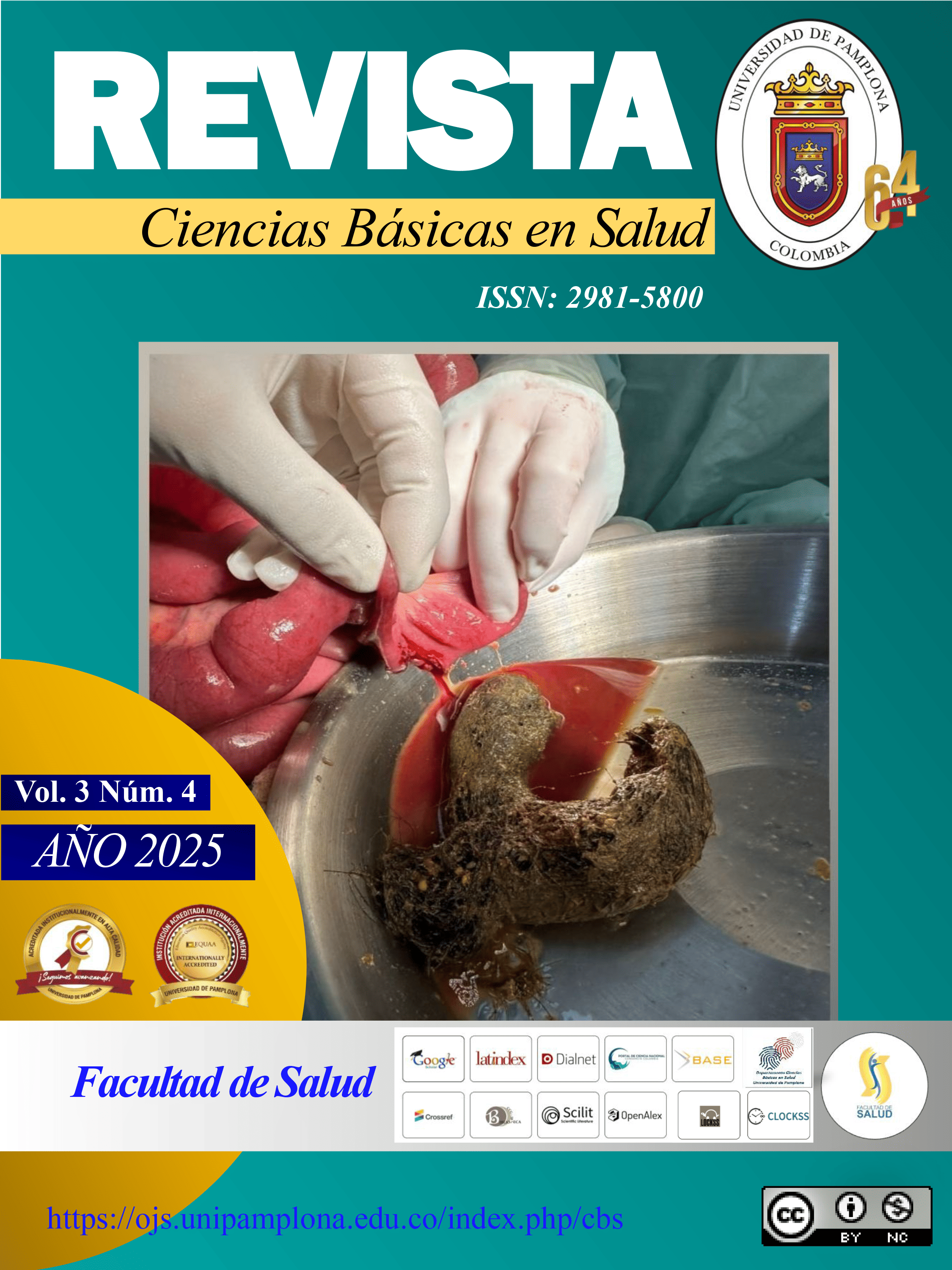Series of biliary tract atresia cases in a Level III hospital in North Santander
DOI:
https://doi.org/10.24054/cbs.v3i4.4178Keywords:
Neonatal cholestasis, Biliary atresia, infants, Jaundice, Pediatric liver transplantationAbstract
Biliary atresia is a rare hepatobiliary disease characterised by an inflammatory and destructive process with progressive obliteration and sclerosis of the intra- and extrahepatic bile ducts, leading to obstruction of bile flow and damage to the parenchyma and intrahepatic bile ducts, with subsequent liver failure and cirrhosis. The surgical treatment of choice has been Kasai portoenterostomy; however, the vast majority of patients require liver transplantation (up to 80%) due to disease progression. To date, this pathology is not subject to mandatory reporting in Colombia, so we do not have epidemiological data despite it being one of the leading causes of TH in the first years of life in the paediatric population. We describe a series of cases including six patients diagnosed with biliary atresia at a tertiary care hospital in the department of Norte de Santander, Colombia. In our work, we highlight the critical importance of early detection strategies for timely diagnosis and treatment to reduce morbidity and mortality.
Downloads
References
Tam PKH, Wells RG, Tang CSM, Lui VCH, Hukkinen M, Luque CD, et al. Biliary atresia. Nat Rev Dis Primers. 2024;10(47).
Lendahl U, Lui VCH, Chung PHY, Tam PKH. Biliary Atresia - emerging diagnostic and therapy opportunities. EBioMedicine. 2021 Dec;74:103689. doi: 10.1016/j.ebiom.2021.103689. Epub 2021 Nov 12. PMID: 34781099; PMCID: PMC8604670.
Antala S, Taylor SA. Biliary Atresia in Children: Update on Disease Mechanism, Therapies, and Patient Outcomes. Clin Liver Dis. 2022 Aug;26(3):341-354. doi: 10.1016/j.cld.2022.03.001. Epub 2022 Jun 25. PMID: 35868678; PMCID: PMC9309872.
Brahee, D.D., Lampl, B.S. Neonatal diagnosis of biliary atresia: a practical review and update. Pediatr Radiol 52, 685–692 (2022). https://doi.org/10.1007/s00247-021-05148-y
Schreiber RA, Harpavat S, Hulscher JBF, Wildhaber BE. Biliary Atresia in 2021: Epidemiology, Screening and Public Policy. J Clin Med. 2022 Feb 14;11(4):999. doi: 10.3390/jcm11040999. PMID: 35207269; PMCID: PMC8876662.
Gutierrez JV, Johnson L, Desai K, Tabak B, Woo RK. Timing of Kasai Procedure for Biliary Atresia: An Analysis of the Pediatric National Surgical Quality Improvement Program Database. J Surg Res. 2024 Aug 19;301:681-685. doi: 10.1016/j.jss.2024.07.002. Epub ahead of print. PMID: 39163800.
Matcovici M, Stoica I, Smith K, Davenport M. What Makes A "Successful" Kasai Portoenterostomy "Unsuccessful"? J Pediatr Gastroenterol Nutr. 2023 Jan 1;76(1):66-71. doi: 10.1097/MPG.0000000000003638. Epub 2022 Oct 27. PMID: 36574004.
Van Hasselt PM, de Koning TJ, Kvist N, de Vries E, Lundin CR, Berger R, Kimpen JL, Houwen RH, Jorgensen MH, Verkade HJ; Netherlands Study Group for Biliary Atresia Registry. Prevention of vitamin K deficiency bleeding in breastfed infants: lessons from the Dutch and Danish biliary atresia registries. Pediatrics. 2008 Apr;121(4):e857-63. doi: 10.1542/peds.2007-1788. PMID: 18381514
Matcovici M, Stoica I, Smith K, Davenport M. What Makes A "Successful" Kasai Portoenterostomy "Unsuccessful"? J Pediatr Gastroenterol Nutr. 2023 Jan 1;76(1):66-71. doi: 10.1097/MPG.0000000000003638. Epub 2022 Oct 27. PMID: 36574004.
Zheng Q, Zhang S, Ge L, Jia J, Gou Q, Zhao J, Zhan J. Investigation into multi-centre diagnosis and treatment strategies of biliary atresia in mainland China. Pediatr Surg Int. 2020 Jul;36(7):827-833. doi: 10.1007/s00383-020-04679-z. Epub 2020 May 22. PMID: 32444895.
Downloads
Published
Issue
Section
License
Copyright (c) 2025 Basic Health sciencies journal

This work is licensed under a Creative Commons Attribution-NonCommercial 4.0 International License.








